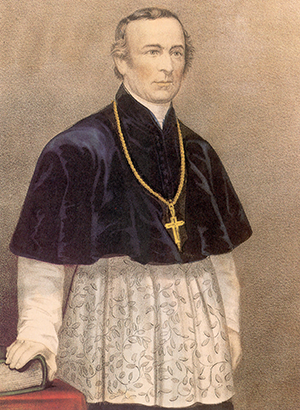BITE-SIZED HISTORY
Published in Issue 5 (September/October 2017), News, Volume 25By TONY CANAVAN
A novel idea for partition
One of the most unusual centenaries recently was that of the suggestion from Lord Rothermere, the newspaper magnate, on how to solve the Irish problem. In 1917 he published an article in Sunday Pictorial, identifying the Irish problem as being about two counties. He said that the 26 counties that were mainly Catholic and nationalist should have their own parliament, and that the four north-eastern counties that were mainly Protestant and unionist should also have their own parliament. That all sounds familiar. The novelty of Rothermere’s idea, however, was that, since counties Tyrone and Fermanagh were 50/50 Catholic/Protestant, they should be left out of the Home Rule scheme and continue to be directly ruled from Westminster. So, a tripartite partition!
Code-cracker
While the Second World War’s Bletchley Park code-breakers are famous, their skills were first developed in the First World War, when code-breakers in the Women’s Auxiliary Army Corps were used to decipher German messages. A Donegal woman, Catherine Hayes Osborne from Milford, was among the first six decoders recruited. According to the Donegal County Museum, she was what was called a ‘Hush WAAC’, a nickname given to the servicewomen attached to the intelligence branch of the British Army’s general staff. She arrived at St Omer, France, on 28 September 1917, with the rank of assistant administrator (second lieutenant). Unfortunately, little is known about Hayes Osborne, since her service records were lost during bombings in the Second World War.
Fighting over Lough Derg
It is 1917: the world is at war, and Ireland is in turmoil after the 1916 Rising. A good time to assert an old feudal claim? Well, Sir John Leslie of Castle Leslie thought so. In 1917 he took legal action to re-establish his family’s claim to ownership of Lough Derg, Co. Donegal, and its historic pilgrimage island. The court case revealed that pilgrimage to Lough Derg is mentioned in the Annals of the Four Masters (1632) and that pilgrims over the centuries had even included the likes of Raymond Perault, chamberlain to King John of Aragon. The pilgrimages were cited in an act of Queen Anne’s reign, which declared them to be ‘riotous and unlawful assemblies and punishable as such’. It seems that Sir John made money out of the ferry that took pilgrims to the island and that there was an agreement from 1881 in which he relinquished any claim to ownership of Lough Derg. Delivering his judgement, Judge Cooke said that all the estate, including the island, had prior to the Reformation belonged to the Catholic Church. Then a certain Dr Leslie, bishop of the Isles, was put in possession of what had been Catholic Church lands surrounding Lough Derg and which were then in possession of the Church of Ireland. The judge stated that the Catholic Church had never laid aside its claim and had never acknowledged that anyone else should have dominion over it. He concluded that Sir John Leslie had no claim to the island and accordingly dismissed the case.

Above: John Joseph Hughes (1797–1864), the first Catholic archbishop of New York—recently honoured by the Ulster History Circle with a blue plaque in Augher, Co. Tyrone, where he was born. (Currier and Ives)
John Joseph Hughes (1797–1864), who became the first Catholic archbishop of New York, has been honoured with a blue plaque by the Ulster History Circle. Hughes emigrated to America in the early nineteenth century and become one of the most influential Americans of his time. He was born in the townland of Annaloghlan near Augher, Co. Tyrone, the third of seven children. He was ordained a priest in Philadelphia in 1824 and consecrated as bishop in 1838; he became the fourth bishop of New York in 1842 and the first archbishop of the city in 1850. He lectured to Congress, was thanked by Abraham Lincoln for his support for the Union during the American Civil War, founded Fordham University and laid the foundation stone of St Patrick’s Cathedral, New York. The blue plaque was unveiled by Archbishop Eamon Martin at St Macartan’s Church, Augher. The Ulster History Circle puts up blue plaques across Ulster’s nine counties to celebrate people of achievement.
Jesse Jackson opens new Museum of Free Derry
US civil rights campaigner Revd Jesse Jackson came to Derry earlier this year to formally reopen the new Museum of Free Derry after a £2.5m face-lift. Situated in the Bogside, the museum records the turbulent period in the city from January 1969 until Operation Motorman in July 1972, taking in the ‘Battle of the Bogside’, the introduction of internment and, of course, Bloody Sunday. Revd Jackson said that the museum was a point of reference linking Derry with civil rights struggles in South Africa and the US, and connecting Nelson Mandela and Martin Luther King with Martin McGuinness, the former deputy first minister, and Nobel laureate John Hume of the SDLP. The museum is owned and managed by the Bloody Sunday Trust.
















